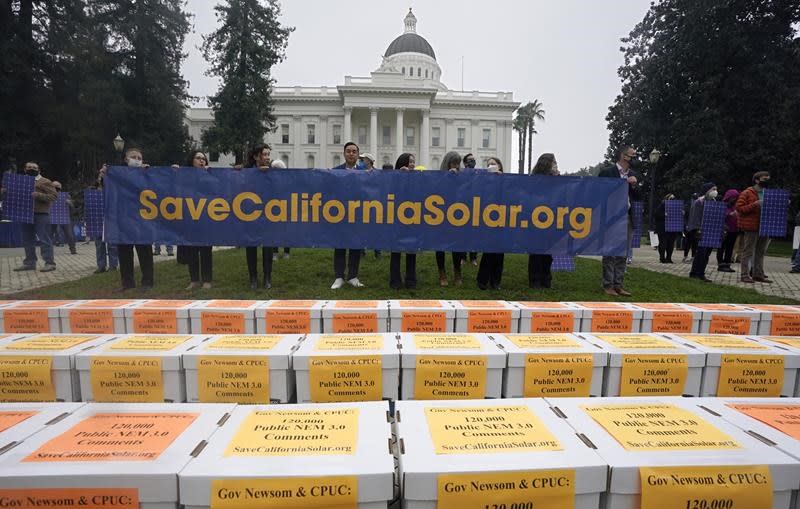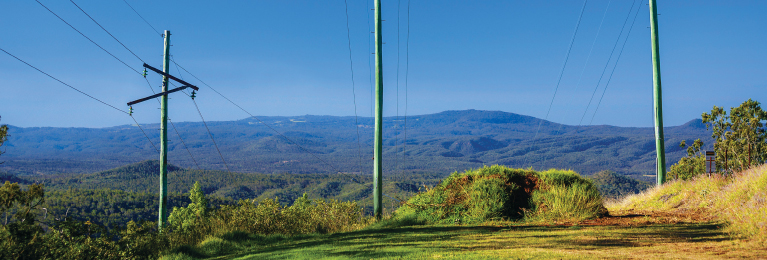Ampster
Renewable Energy Hobbyist
in California they are too busy to notice. They are way behind on grid maintenance.Some places around here they’ll call and umm…....
in California they are too busy to notice. They are way behind on grid maintenance.Some places around here they’ll call and umm…....
honestly, im off grid ( been for many years) so makes little difference to me personally, however still doesn't make it right... the point i was trying to make is the they have been profiting off the system for decades, yet they STILL use current energy usage / supposed costs to justify there ridicules profits for a essential service... yet are unwilling to upgrade the system / repair the system to suit the needs of the population.. ( also encourage more adoption of " green " energy) its a "we will let you as long as we keep making tons of money"..It's the same everywhere in Australia - there is only one DNSP servicing any given region in Australia. There are two in QLD (Energex & Ergon), three in NSW, five in VIC, one each in SA, TAS, NT, ACT & WA. I am in the Essential Energy region in NSW (regional NSW). The fees distributors charge the retailers are heavily regulated.
It's on the retail side where the level of competition varies, but frankly the choices, while numerous in the more populated regions, and often not all that different.
The Ergon distribution region is slowly getting more retail options available but it's possibly limited to specific postcodes.
Aside from Ergon Energy's retail offer (which actually isn't that bad compared with most of Australia, it's significantly cheaper than what we pay in regional NSW), other retailers are now offering retail electricity plans in the Ergon distribution region:
- Social Energy
- Locality Planning Energy
- Mojo Power
- QEnergy
Check them out, may find something more suitable to your energy use profile.
As to what FITs are on offer, remember these do not incur any distribution or network fees at all. Those fees only apply to imports. FITs up to about 8c/kWh are on offer in the Ergon region but right across the eastern states I would expect the normal value of FITs to be in the 3-8c/kWh range. The days of 10-20c/kWh FITs are well behind us, and the state preferential FIT schemes are only for legacy systems (mostly early adopters with fairly small solar PV systems) and the last such offer in Australia closed to new applications in 2016.
as i do agree with you about the " softening " of the general population, please keep in mind that here in north Queensland it regularly gets over 40°c and high humidity ( 80% +) ( just put into prospective we broke records 1 year for getting into single digits temp wise during winter, its ALWAYS hot here), now a hundred years ago you would go for a swim in a hopefully croc free creek, then go sit under a shady tree... until it cools sorta... but if you are 70+ and living in a retirement home and can't do the above ( most cases) you NEED some way to cool yourself, or you die , but when TV / radio is telling you to turn off your air con cause the system is overloaded... again, you do... and why every summer so many reports of people ether dying or ending up in hospital with serious heat stroke etc.. happens more often than they like to tell us.. but hey, as long as the share holders are happy..No. Those houses without solar aren’t getting a return on investment because they didn’t invest anything.
Basically across the states incentives were given to help solve a personal cost aversion problem as private was viewed as a partial solution to a real problem. Buy-back rates were implemented to amortize the incentive. So to in retrospect when ‘they’ decide that those who made the investment no longer deserve the incentives there are ethical problems with that.
Those non-solar houses aren’t “picking up the tab” they merely getting no return on the investment that they didn’t make.
That is a frustrating component of post-modern thought to me. How many thousands of years did people survive on the earth without tv and air conditioning?
I’m not saying we need go live in caves, but rather in a global sense mankind has become soft and and intolerant of any discomfort, and unwise in our approach to selecting our locales of residency.
As is is stated often here in regards to folks trying to assemble solar to meet their requirements; reducing and modifying consumption behavior is less expensive than buying system components.
Just my opinion.
Locally here in northern New England I’ve been amazed in my lifetime over the growth in window and central AC. When I was a kid the only family I knew of with air conditioning the father was a nuclear scientist and engineer. And even then they often had the windows open instead of paying the bill for air conditioning.
If the demand wasn’t borderline maxed in so many areas the solution of solar wouldn’t have been as attractive to public utility regulators. But it was attractive, they incentivized it, and now it’s “oops. Sorry. Never mind” which is an ethical problem in my opinion.
As far as disassemble coal plants: why? Inoperative plants have the infrastructure to support ginormous inverter exports from battery banks. This is already being done to store excess to return to the grid at demand times. If that’s working economically now, with coming battery technology that purports costs will be at a fraction of lifepo rooftop solar that exceeds demand by a large margin makes sense.
Unless this year’s profit is the only goal.
I don't see that happening for residential customers. Commercial customers already pay a demand charge. I have been charging EVs at home for ten years and I used to get a very favorable rate for charging off peak. Now, half my charging is during the day to be able to use my solar.In the future I can see them creating a surcharge for people use an EV charger.
Not when there was a 20 year lock-in of utility feed-in terms, and terms get changed by PUC and PG&E.
Now the problem is California law requires PV on roof of new homes, and proposed regulations by PUC sets net compensation at exported power at $0.00/kWh. Most rooftop production is middle of the day, when we're away at work not using power. Our consumption is in the evening/night/morning when little sunlight.
Same for my air conditioner. I get $100+ back each year and my usage has only been interrupted once in 15 years. I tend to use the air at night when the curtailment has ended.Individually people seem to be reluctant sign up for those plans. I got a $5 a month credit on my bill for allowing them to turn off my EV charger when the grid was stressed. Ironically I never used the charger during peak times.
The ultimate load shedding by the utilities is rolling blackouts.
I don't see that happening for residential customers. Commercial customers already pay a demand charge. I have been charging EVs at home for ten years and I used to get a very favorable rate for charging off peak. Now, half my charging is during the day to be able to use my solar.
Going to take a while for people to understand TOU rates and to avoid the 4pm to 9pm premium pricing.If everyone comes home and starts charging from 17:00 until 22:00 yeah that added demand is going to impact peak load dramatically. Luckily it’s very easy to adjust charging times.

I don't like the fixed fees one bit. Far prefer a lower rate of compensation for exported power.Good Article by Consumer Reports ledger companies in California pushing for grid charge based on how many kilowatts of energy they produce; it would cost $40 to $50 for most homes. Between this and adding fees just having a meter is the way any payments to customers will make grid tie worthless

California proposes reducing incentives for rooftop solar
SACRAMENTO, Calif. (AP) — California regulators proposed major changes to the state’s booming residential solar industry Monday, including reducing the discounts homeowners with rooftop solar and storage systems get on their electric bills when they sell extra energy back to the power companies...ca.finance.yahoo.com
I don't like the fixed fees one bit. Far prefer a lower rate of compensation for exported power.
Even zero compensation is better than a fixed fee. Then we just stop exporting.
I don't think FIT would exist outside of it just being a green inducement. The fact it is still around is because it is a lot harder to take something away from people than to give and is why threads like this will keep appearing.For most who are on regular retail plans, each state government each year determines what they expect to be a fair minimum value for FIT based on the real value of the energy at those times of day, and only in Victoria is this value a mandated minimum retailers must pay. For other NEM states it's just a guideline. In VIC the 2021/22 minimum is 6.7c/kWh, and the current draft proposal is for that to drop to ~5.2c/kWh from 1 July.
Ergon Energy is wholly owned by the State of Queensland. The prices charged are some of the most heavily regulated in the country and set by legislation. The lack of competition in the retail space is unfortunate but at the same time understandable given the massive amount of terrain covered and many small networks which are not linked to the NEM. Corporate governance and reports can be found here:yet they STILL use current energy usage / supposed costs to justify there ridicules profits for a essential service... yet are unwilling to upgrade the system / repair the system to suit the needs of the population

Outside of Victoria there is no requirement for any retailer in the NEM to pay a FIT, and indeed you can get retail plans with zero FIT now.I don't think FIT would exist outside of it just being a green inducement.
There is zero link between FITs offered in each state. FITs are a state by state tariff.I can see a problem if retailers up here in Qld adjust their rates to offset Vic FIT payments.
yeah... they like to report how well they are doing ... but in the real world its very different...but hey, thats just my PERSONAL experience...Ergon Energy is wholly owned by the State of Queensland. The prices charged are some of the most heavily regulated in the country and set by legislation. The lack of competition in the retail space is unfortunate but at the same time understandable given the massive amount of terrain covered and many small networks which are not linked to the NEM. Corporate governance and reports can be found here:

Publications - Energy Queensland
Read the latest Annual Report and past reports for Energy Queensland.www.energyq.com.au
If performance is an issue, then contact your local member.
Your personal anecdotal experience is no doubt poor and I've also no doubt there are other problems - it's common in regional/rural Australia as it's a difficult challenge given the terrain our networks have to cover for the population. But their global performance may also be pretty OK. Frustratingly, both can be correct.thats just my PERSONAL experience

This is one reason why you should care, they can and will come for youhonestly, im off grid ( been for many years) so makes little difference to me personally, however still doesn't make it right... the point i was trying to make is the they have been profiting off the system for decades, yet they STILL use current energy usage / supposed costs to justify there ridicules profits for a essential service... yet are unwilling to upgrade the system / repair the system to suit the needs of the population.. ( also encourage more adoption of " green " energy) its a "we will let you as long as we keep making tons of money"..

I disagree, given one’s experience let’s other know of the problem, Then activism can began. Governments have failed to protect the people which is how you end up with monopolies, as for the terrain power plans could have been built instead of running lines. In the long run running lines is more profitable, since they will use this a reason to raise rates.Your personal anecdotal experience is no doubt poor and I've also no doubt there are other problems - it's common in regional/rural Australia as it's a difficult challenge given the terrain our networks have to cover for the population. But their global performance may also be pretty OK. Frustratingly, both can be correct.
I agree the current arrangements are far from perfect, but complaining on a forum does little. That said, venting is OK. Understanding how it works and working on ways to constructively engage for positive change, and at the least work out how to do the best for yourself and for your local community is next.


